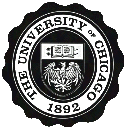 |
| Home |
| Research |
| People |
| Publications |
| Contact |
| News |
| Links |
| Research in The He Group |
|
Our research program spans a broad range of chemistry, bioinorganic chemistry and chemical biology. We work on new metal-based chemistry and catalysis. We design biosensors for detection of metal ions both in vitro and in vivo. We study metal ion homeostasis and the mechanism of selective metal ion recognition in biology. And we prepare modified oligonucleotides to (i) probe the mechanism of DNA repair proteins; (ii) stabilize discrete protein/DNA interactions for structural characterization; (iii) trap and identify new DNA repair and modification proteins. 1. DNA Repair
2. Study of Metal Homeostasis and Develop Metal Ion Biosensors
The ability to
regulate essential or toxic metal ion concentrations is critical for
cell survival. Our goal is to understand how specific metal ions are
recognized and regulated in biological systems. We hope to build
sensitive and selective metal ion biosensors to trace metal ion
homeostasis pathways in vivo and to detect toxic metal ions in vitro. a) In vitro metal ion biosensors. We developed a general strategy to convert the MerR family proteins, transcriptional regulators in the control of toxic metal ion concentrations, into fluorescent biosensors. This technology also allows us to study the behavior of newly found MerR proteins. Another effort in the laboratory is to convert the transcription repressor (ArsR) and activator (Fur) family proteins into fluorescent metal ion reporters. b) In vivo metal ion biosensors. Our laboratory is also working on developing genetically encoded fluorescent biosensors for metal ions. These sensors can be important tools for the study of metal ions homeostasis. Various metalloregulatory proteins will be use as the templates. c) Structurally characterize metalloregulatory protein.s In order to elucidate the mechanism of the selective metal ion reorganization in biology, various metalloregulatory proteins need to be structurally characterized. Our lab is working on structural studies of several metalloregulatory proteins. [Detail] 3. Chemistry and Catalysis with Silver and Gold a) Develop gold(III)-catalyzed aromatic C-H functionalization. We discovered a gold(III)-mediated hydroarylation reaction of electron deficient alkynes and alkenes. Our group is also the first to develop functionalization of aromatic C-H with epoxides and primary alcohol sulfonate esters. These reactions work at ambient temperature and provide favorable methods for constructing complicated aromatic molecules. Other interesting gold(III) chemistry, for instance, redox chemistry and activation of aliphatic alkenes, is also being investigated . b) Discover new silver-mediated oxidation reactions. Oxidation chemistry with high-valent silver ions has not been extensively studied in the past. We have discovered the first example of olefin aziridination catalyzed by a silver complex. The same compound also catalyzes intramolecular amidation of saturated C–H bonds.
c) Dioxygen chemistry of silver and high-valent silver chemistry. Silver particles have been used to activate dioxygen to epoxidize ethylene in industry. We are studying silver-dioxyegn chemistry in solution. Due to high oxidation potential typically associated with silver ions, oxygenated silver species may exhibit unique oxidation activity. We design and prepare donating, sterically bulky ligands to explore dioxygen-activation and high-valent silver chemistry. [Detail] |


